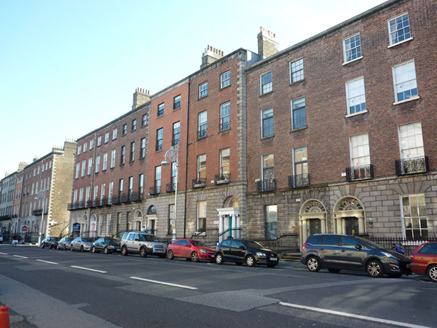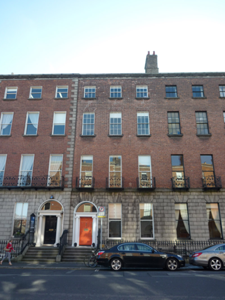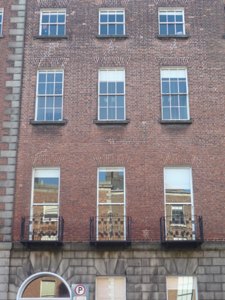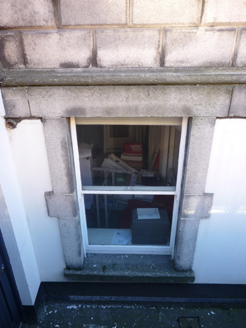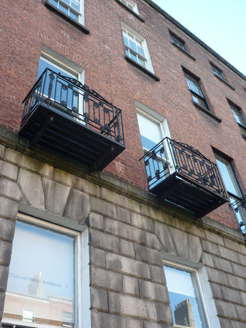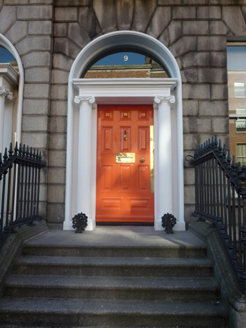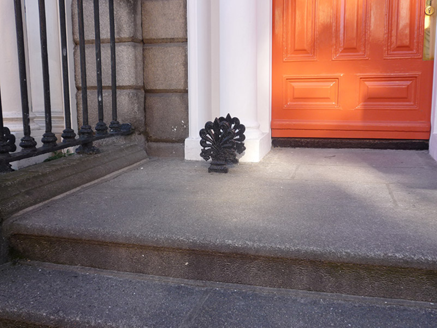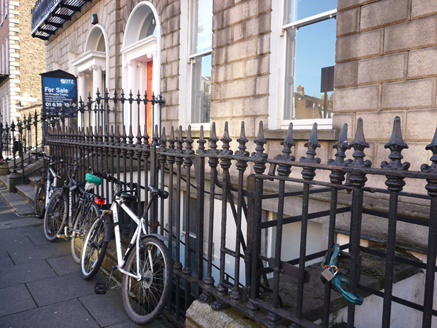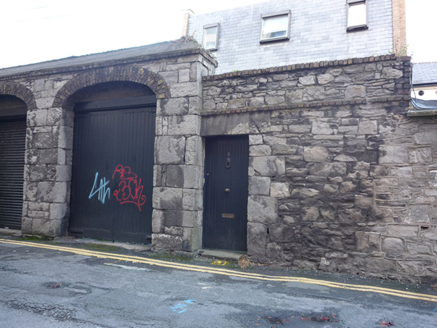Survey Data
Reg No
50930137
Rating
Regional
Categories of Special Interest
Architectural, Artistic
Original Use
House
In Use As
Office
Date
1815 - 1835
Coordinates
316510, 232899
Date Recorded
28/08/2015
Date Updated
--/--/--
Description
Attached three-bay four-storey over basement former townhouse, built c. 1825, as a pair with No. 10 (50930138). Three-storey flat-roofed return to rear (east) elevation. Now in use as offices. M-profiled roof, hipped to north, concealed by ashlar granite parapet with moulded cornice and blocking course. Two shouldered brick chimneystacks to south party wall with replacement clay pots and diminutive chimneystack to east elevation having lipped yellow clay pot. Parapet gutters, cast-iron hopper and downpipe to north end of rear (east) elevation. Red brick walling in Flemish bond, rusticated ashlar granite walling to ground floor and rendered walling to basement beneath granite plinth course. Square-headed window openings with brick voussoirs, rendered reveals and granite sills; granite surrounds to basement. Decorative cast-iron balconettes to first-floor windows (west) and wrought-iron guard rails to third floor rear (east). Largely one-over-one replacement timber sliding sashes with ogee horns, six-over-six to second floor and three-over-three to third floor with cavetto horns. Bipartite window to third floor rear (east) with two-over-two sashes and bipartite round-headed casements to second floor. Round-headed door opening with moulded reveals and recessed doorcase with prostyle portico comprising moulded cornice and panelled frieze carried on Scamozzian-Ionic pilasters, with plain glass fanlight and raised-and-field timber panelled door. Granite entrance platform with cast-iron boot scrapers, approached by six nosed granite steps, flanked by cast-iron railings with decorative finials and corner posts over carved granite plinth, enclosing basement well to south. Steel steps to basement well with plainly detailed replacement door beneath entrance platform. Coal-hole cover to pavement. Street fronted on the east side of Fitzwilliam Place. Modernised (or replacement) mews building to rear (east) plot. Elliptical-headed carriage-arch to boundary on Lad Lane Upper, with brick voussoirs, raked cornice, dressed stone surrounds and timber-sheeted doors. Abutted to north by rubble stone wall with brick coping and square-headed pedestrian opening with dressed stone surrounds and replacement timber door.
Appraisal
Although built as a pair with No. 10, this former townhouse has similar external detailing to No. 8 with fine Ionic doorcase, decorative balconettes and railings to street. The subtle variations in detailing, proportions and scale of the street are indicative of its speculative development. Built in pairs or groups, the house designs emulated those of Fitzwilliam Square South. Developed in conjunction with the east and south sides of Fitzwilliam Square, the eastern side of Fitzwilliam Place was completed by 1836, with the exception of five houses to the south-end. Its setting is enhanced by the retention of the rear boundary wall and carriage-arch addressing Lad Lane Upper.
